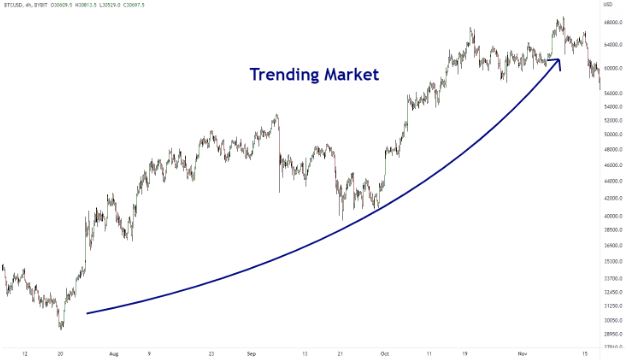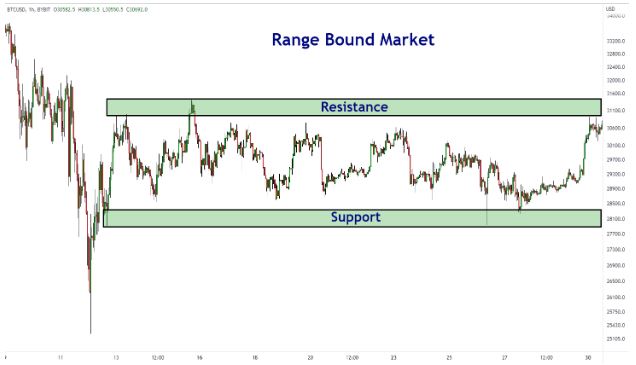Top 3 Strategies for Master Copy Traders
Copy trading has become more popular as new traders seek to copy an expert trader. Rather than paying expensive management fees, copy trading allows traders to place the same trades that an expert does for a small fee, which is typically around 5 to 10% of the follower’s profits.
Copy trading is also beneficial for the expert traders — also called master traders — as they earn additional income on top of the trades they’re already placing (since the master trader earns 5 to 10% of the profit that their followers make). In this article, we’ll cover three strategies for master traders to consider.
Who Is the Master in a Copy Trader Relationship?
A master trader is an expert trader who allows their trades to be copied by others and, in return, receives a profit share from the copied trades.
In order to increase the profit share from followers, the master trader will need to:
Increase their number of followers
Protect their trades from incurring deep losses
Find profitable trades
All of these goals are interconnected. Traders like to follow experts who can consistently generate profitable trades with the least amount of risk available. Therefore, traders will want to implement strategies that protect their account from large losses, while consistently finding profitable trades.
Three Strategies for Master Traders
Reading the market and managing risk are critical components for expert traders to master. Here are some strategies that expert traders employ.
Strategy #1: Understand the market conditions
Have you ever noticed that sometimes your strategy will knock off several winning trades in a row — only to then take on several losing trades? This is because the market’s conditions are changing.
A range-bound trading strategy will work great in sideways markets, but it will get chewed up on strong trends. Additionally, breakouts work great when the market is volatile, but they can give up several losing trades when the volatility is quiet.
Strategies aren’t designed to work well in all conditions — and conditions change constantly. Therefore, it’s important to understand in what type of market condition your strategy will excel.
There are two general types of market conditions, which are opposites of each other:
Volatile or trending
Stable, quiet, or range-bound.
Volatile and trending market conditions:
If volatile or trending market conditions exist, then use trend-following strategies — such as trading the breakout, or buying the dip. In trending environments, good values generally don’t last long, as the market pricing is dislocated and is trying to find a new equilibrium.
If the market is trending higher, then buy the dip or buy the breakout. If the market is trending lower, then sell the rally or sell the breakdown.
Stable, quiet, and range-bound market conditions:
Mean reversion strategies work best in range-bound markets. This means that if the market rallies, it generally won’t run away to the upside, and will revert back to an average.
Additionally, you’ll find prices spending more time moving sideways than making any progress. Buying at support and selling at resistance tend to work well, too. Breakout trades in this environment will suffer, as prices are comfortable where they are — since the buyers and sellers are relatively balanced.
Assess your strategy and manually backtest it over a variety of market conditions. During which types of market conditions does the strategy tend to perform better? In which types of conditions does the strategy tend to underperform?
When a market condition arises that isn’t optimal for your strategy, then step aside so your account doesn’t experience a large drawdown. Or better yet, change over to another strategy that’s optimized for that given market environment.
Strategy #2: Manage your risk-to-reward ratio
You’ll never know for sure if the next trade will be profitable until it closes. As a result, many traders get lured into thinking that the market is random — and that winning more than 50% of their trades is a profitable strategy.
This is not entirely true. Would you believe that a trader can have a strategy that wins 80% of the time — but still loses over the long run? How is that possible?
It happens because the trader is risking a lot to make a little. Let’s illustrate with some numbers:
Trader A wins $100 on 80% of their trades. About 20% of the time, the market will go crazy, and they’ll lose $500 because they use a mental stop or a wide stop-loss.
Trader B wins $300 on 45% of their trades. They have a well-defined strategy that risks $150 on each trade, and they lose slightly more than half the time, but they stick with their strategy.
Which trader is more profitable? Let’s run a simulation of 20 trades.
Trader A
Wins 16 trades (20 trades × 80%) @ $100/each +1,600
Loses 4 trades (20 trades × 20%) @ $500/each −2,000
Net −400
Trade B
Wins 9 trades (45% × 20 trades) @ $300/each +2,700
Loses 11 trades (55% × 20 trades) @ $150/each −1,650
Net +1,050
Trader A risked a lot ($500 on losers) to make a little ($100 on winners). Trader B managed their trades better — and stuck to their strategy.
Manage your risk-to-reward ratio by calculating what your average winning trade is and comparing it to your average losing trade.
Then insert those numbers into this formula:
Avg. loser / (avg. winner + avg. loser) = required win ratio to BREAK EVEN
In Trader A’s strategy, the average loser was $500 and the average winner was $100. Popping that into the formula:
$500 / ($100 + $500) = 0.8333, or 83%
This means that Trader A needs an 83% win ratio to simply break even — and that’s not generating any profit.
Trader B, on the other hand, has a break-even win ratio at:
$150 / ($300 + $150) = 33%.
Trader B’s win ratio is 45% which is well above their break-even point. As a result, Trader B is showing a significant profit.
As a master trader, you need to know your numbers — such as your average winning trade, average losing trade and your win ratio. When you run your numbers, does your strategy have long-term sustainability — or does it lure you due to a high win ratio?
Are you risking a lot to make a little? If so, turn it around to risk a little to make a larger reward.
Generally speaking, trend-following strategies allow traders to earn a reward multiple times the level of their risk. That’s why following the strongest trends is a widely accepted strategy.
Strategy #3: Manage your risk levels and potential drawdowns
Drawdowns are the nemesis of traders. A large drawdown digs a deep hole. When a trader is stuck in a deep hole, often times they’ll elicit risky behavior to climb out of the hole. That risky behavior begets an even deeper hole — and the trader then adds even more risk in order to climb out quickly.
This becomes a terrible feedback loop that leads to the trader’s account capital blowing up.
Therefore, it starts with the leverage utilized in any given position. A trader losing 2% on any given trade is manageable, as several losing trades in a row would keep the drawdown levels relatively small.
However, adding lofty amounts of leverage to a trade increases the potential for a devastating loss. Once the lost capital becomes large, your buying power and ability to recover are greatly diminished.
Drawdown | Gain Needed to Recover Back to Breakeven |
−10% | +11% |
−25% | +33% |
−33% | +50% |
−50% | +100% |
−75% | +300% |
From the table above, a simple 10% drawdown in the account can be brought back to the breakeven level with a 11% gain. However, a 33% drawdown over the collection of losing trades would require a 50% gain to simply arrive back at breakeven.
As a master trader, your income is based on generating profit for your subaccount traders. If you spend a lot of time and energy trying to recover from a large drawdown, that means that you’re not generating additional profit for your copy traders.
Therefore, it’s important to manage your drawdown levels and reduce the risk on your trades by reducing the leveraged amounts.
Learn more: A complete guide to customizing your Master Trader account on Bybit
Conclusion
Increasing followers for copy trading involves consistent results with reduced leverage. That way, drawdowns are reduced so the master trader can earn profit share income from their followers.
Understanding the different market conditions — and which one your strategy caters to — will help generate more consistent results. Managing your risk-to-reward ratio to give your strategy staying power will allow you to build a track record that followers will want to copy.

